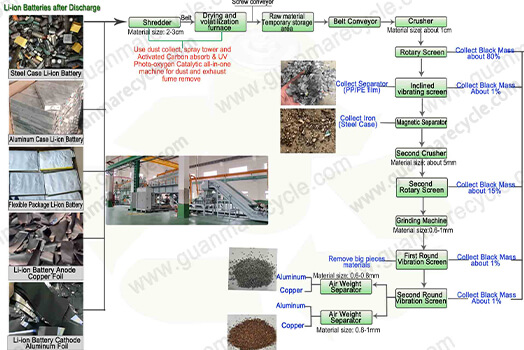In the era of electric vehicles and portable electronics, lithium-ion batteries have become indispensable. However, with the surge in demand comes the responsibility to handle their end-of-life sustainably. The lithium battery recycling process stands as a pivotal strategy to mitigate environmental impact, conserve resources, and fuel the circular economy. This article delves into the intricate steps involved in this process, highlighting its significance for businesses and the planet alike.
Understanding the Need for Lithium Battery Recycling
Lithium-ion batteries, praised for their high energy density and long cycle life, contain valuable materials like lithium, cobalt, nickel, and copper. When discarded improperly, these batteries pose fire hazards and leach toxic chemicals into the environment. Lithium battery recycling process, therefore, is not just an ecological imperative but also a smart economic move, retrieving these precious metals for reuse.
Collection & Sorting: The first step involves collecting used batteries from various sources, including consumers, manufacturers, and recycling centers. Batteries are then sorted based on their chemistry and condition, a crucial step to ensure efficient processing.
Pre-treatment: To enhance safety and efficiency, batteries undergo a pre-treatment phase. This includes discharging to remove stored energy, often using a controlled discharge process, followed by dismantling to separate plastic casings, metal components, and the battery cells.

Hydrometallurgical Processing: A common method employs hydrometallurgy, where batteries are shredded and treated with solvents to dissolve metals. Through a series of chemical reactions, lithium, cobalt, and other metals are extracted and separated from the solution.
Pyrometallurgical Recovery: Alternatively, pyrometallurgical processes involve high-temperature smelting to recover metals. While less selective than hydrometallurgy, it can handle mixed and contaminated batteries effectively.
Refining & Reintegration: Extracted metals are refined to their pure forms and then reintegrated into the manufacturing supply chain. This closed-loop system significantly reduces the need for mining raw materials, conserving natural resources and reducing carbon footprint.
Why Invest in Lithium Battery Recycling?
For businesses operating within the battery or EV sectors, integrating a robust lithium battery recycling process presents numerous advantages:
Regulatory Compliance: With tightening environmental regulations worldwide, recycling ensures legal compliance and avoids potential penalties.
Cost-Efficiency: Recovered materials offer cost savings compared to freshly mined elements, enhancing profitability in the long run.
Brand Reputation: Demonstrating commitment to sustainability enhances brand image and attracts eco-conscious consumers.
Supply Chain Resilience: Recycling reduces dependence on volatile commodity markets, ensuring a stable supply of critical battery materials.
The lithium battery recycling process represents a vital link in the transition towards sustainable energy systems. By embracing advanced recycling technologies and fostering a circular economy, we can minimize waste, protect the environment, and secure a future where technology and nature coexist harmoniously. For businesses navigating the green revolution, investing in lithium battery recycling is not just a choice—it’s a strategic imperative for sustainable growth and a cleaner tomorrow.


